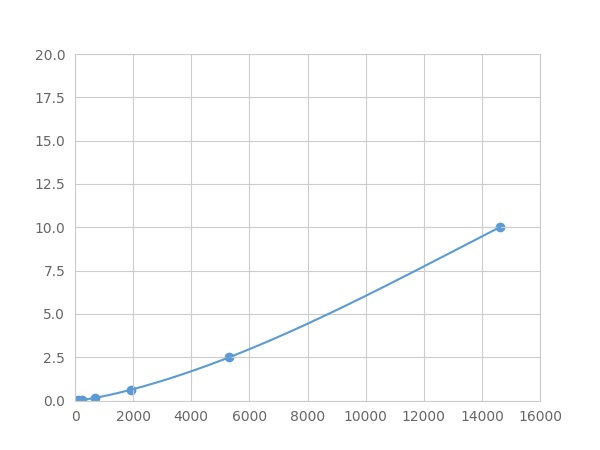Packages (Simulation)

Reagent Preparation

Image (I)
Image (II)
Certificate


Multiplex Assay Kit for Uncoupling Protein 1, Mitochondrial (UCP1) ,etc. by FLIA (Flow Luminescence Immunoassay)
SLC25A7; UCP; Thermogenin; Solute carrier family 25 member 7
(Note: Up to 8-plex in one testing reaction)
- Product No.LMF557Mu
- Organism SpeciesMus musculus (Mouse) Same name, Different species.
- Sample TypeTissue homogenates, cell lysates and other biological fluids
- Test MethodDouble-antibody Sandwich
- Assay Length3.5h
- Detection Range0.01-10ng/mL
- SensitivityThe minimum detectable dose of this kit is typically less than 0.003 ng/mL.
- DownloadInstruction Manual
- UOM 8Plex 7Plex 6Plex 5Plex 4Plex 3Plex 2Plex1Plex
- FOB
US$ 449
US$ 467
US$ 492
US$ 527
US$ 562
US$ 613
US$ 691
US$ 864
Add to Price Calculator
Result
For more details, please contact local distributors!
Specificity
This assay has high sensitivity and excellent specificity for detection of Uncoupling Protein 1, Mitochondrial (UCP1) ,etc. by FLIA (Flow Luminescence Immunoassay).
No significant cross-reactivity or interference between Uncoupling Protein 1, Mitochondrial (UCP1) ,etc. by FLIA (Flow Luminescence Immunoassay) and analogues was observed.
Recovery
Matrices listed below were spiked with certain level of recombinant Uncoupling Protein 1, Mitochondrial (UCP1) ,etc. by FLIA (Flow Luminescence Immunoassay) and the recovery rates were calculated by comparing the measured value to the expected amount of Uncoupling Protein 1, Mitochondrial (UCP1) ,etc. by FLIA (Flow Luminescence Immunoassay) in samples.
| Matrix | Recovery range (%) | Average(%) |
| serum(n=5) | 80-92 | 88 |
| EDTA plasma(n=5) | 99-105 | 102 |
| heparin plasma(n=5) | 94-103 | 97 |
Precision
Intra-assay Precision (Precision within an assay): 3 samples with low, middle and high level Uncoupling Protein 1, Mitochondrial (UCP1) ,etc. by FLIA (Flow Luminescence Immunoassay) were tested 20 times on one plate, respectively.
Inter-assay Precision (Precision between assays): 3 samples with low, middle and high level Uncoupling Protein 1, Mitochondrial (UCP1) ,etc. by FLIA (Flow Luminescence Immunoassay) were tested on 3 different plates, 8 replicates in each plate.
CV(%) = SD/meanX100
Intra-Assay: CV<10%
Inter-Assay: CV<12%
Linearity
The linearity of the kit was assayed by testing samples spiked with appropriate concentration of Uncoupling Protein 1, Mitochondrial (UCP1) ,etc. by FLIA (Flow Luminescence Immunoassay) and their serial dilutions. The results were demonstrated by the percentage of calculated concentration to the expected.
| Sample | 1:2 | 1:4 | 1:8 | 1:16 |
| serum(n=5) | 89-105% | 91-98% | 90-98% | 80-97% |
| EDTA plasma(n=5) | 85-104% | 96-105% | 79-95% | 87-101% |
| heparin plasma(n=5) | 80-95% | 80-91% | 88-95% | 79-104% |
Stability
The stability of kit is determined by the loss rate of activity. The loss rate of this kit is less than 5% within the expiration date under appropriate storage condition.
To minimize extra influence on the performance, operation procedures and lab conditions, especially room temperature, air humidity, incubator temperature should be strictly controlled. It is also strongly suggested that the whole assay is performed by the same operator from the beginning to the end.
Reagents and materials provided
| Reagents | Quantity | Reagents | Quantity |
| 96-well plate | 1 | Plate sealer for 96 wells | 4 |
| Pre-Mixed Standard | 2 | Standard Diluent | 1×20mL |
| Pre-Mixed Magnetic beads (22#:UCP1) | 1 | Analysis buffer | 1×20mL |
| Pre-Mixed Detection Reagent A | 1×120μL | Assay Diluent A | 1×12mL |
| Detection Reagent B (PE-SA) | 1×120μL | Assay Diluent B | 1×12mL |
| Sheath Fluid | 1×10mL | Wash Buffer (30 × concentrate) | 1×20mL |
| Instruction manual | 1 |
Assay procedure summary
1. Preparation of standards, reagents and samples before the experiment;
2. Add 100μL standard or sample to each well,
add 10μL magnetic beads, and incubate 90min at 37°C on shaker;
3. Remove liquid on magnetic frame, add 100μL prepared Detection Reagent A. Incubate 60min at 37°C on shaker;
4. Wash plate on magnetic frame for three times;
5. Add 100μL prepared Detection Reagent B, and incubate 30 min at 37°C on shaker;
6. Wash plate on magnetic frame for three times;
7. Add 100μL sheath solution, swirl for 2 minutes, read on the machine.
GIVEAWAYS
INCREMENT SERVICES
| Magazine | Citations |
| Stem Cells | FM19G11 Favors Spinal Cord Injury Regeneration and Stem Cell Self-Renewal by Mitochondrial Uncoupling and Glucose Metabolism Induction PubMed: 22865656 |
| Diabetes. | Inorganic nitrate promotes the browning of white adipose tissue through the nitrate-nitrite-nitric oxide pathway Pubmed:25249574 |
| Journal of Cachexia, Sarcopenia and Muscle | Muscle wasting and adipose tissue browning in infantile nephropathic cystinosis Doi: 10.1002 |
| FASEB J | Single-cell transcriptomics and functional target validation of brown adipocytes show their complex roles in metabolic homeostasis PubMed: 26304220 |
| FASEB JOURNAL | Irradiation of carotid baroreceptor with low‐intensity pulsed ultrasound exerts different metabolic protection in perirenal, epididymal white adipose tissue and … Pubmed: 32954574 |
| Brown and beige adipose tissue regulate systemic metabolism to resist diet-induced obesity through metabolite signals in an inter-organ signaling axis | |
| Science reports | All-trans-retinoic acid ameliorates atherosclerosis, promotes perivascular adipose tissue browning, and increases adiponectin production in Apo-E mice 33627760 |
| Nature Communications | Brown and beige adipose tissue regulate systemic metabolism through a metabolite interorgan signaling axis 33772024 |





